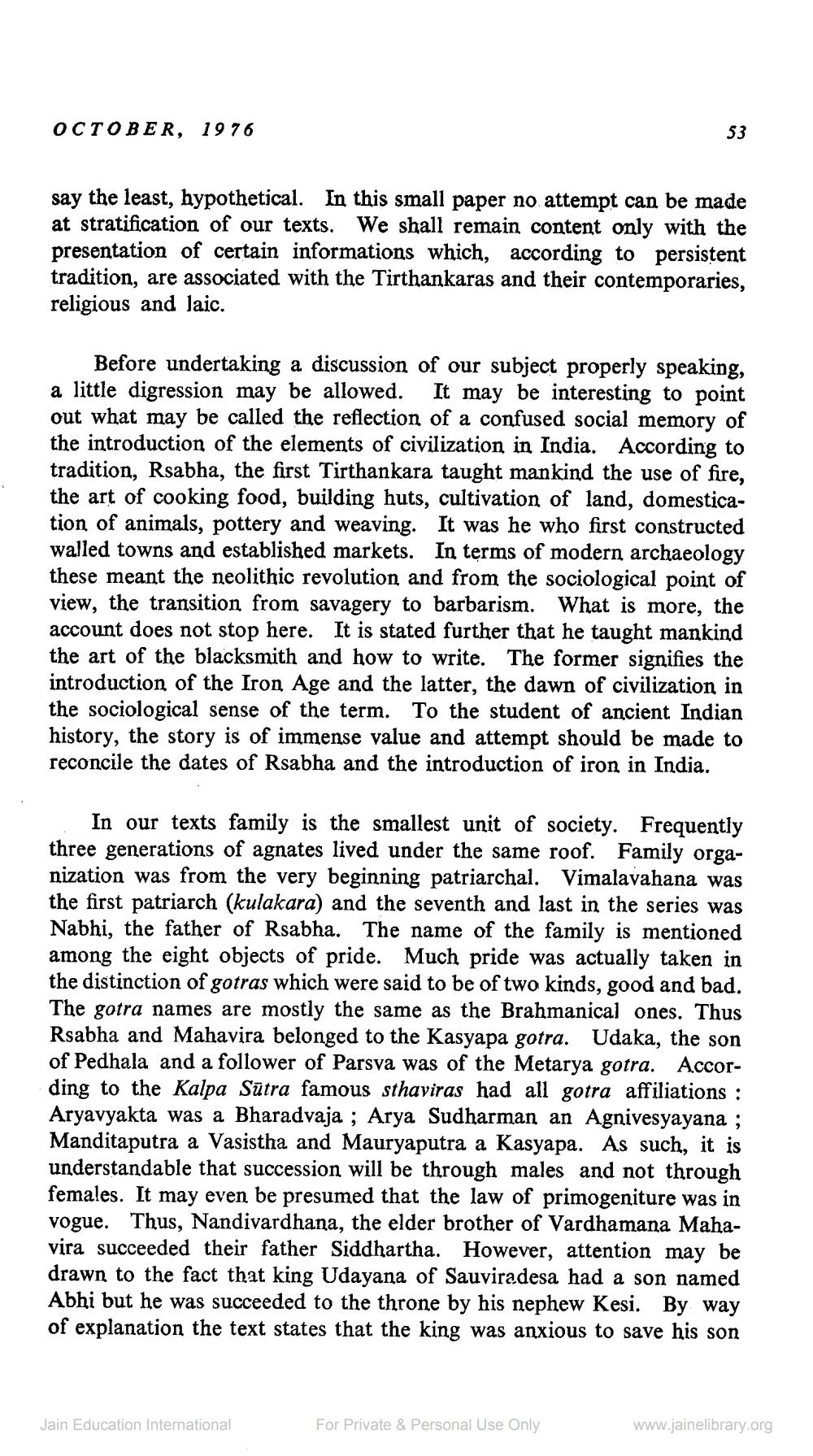________________
OCTOBER, 1976
say the least, hypothetical. In this small paper no attempt can be made at stratification of our texts. We shall remain content only with the presentation of certain informations which, according to persistent tradition, are associated with the Tirthankaras and their contemporaries, religious and laic.
53
Before undertaking a discussion of our subject properly speaking, a little digression may be allowed. It may be interesting to point out what may be called the reflection of a confused social memory of the introduction of the elements of civilization in India. According to tradition, Rsabha, the first Tirthankara taught mankind the use of fire, the art of cooking food, building huts, cultivation of land, domestication of animals, pottery and weaving. It was he who first constructed walled towns and established markets. In terms of modern archaeology these meant the neolithic revolution and from the sociological point of view, the transition from savagery to barbarism. What is more, the account does not stop here. It is stated further that he taught mankind the art of the blacksmith and how to write. The former signifies the introduction of the Iron Age and the latter, the dawn of civilization in the sociological sense of the term. To the student of ancient Indian history, the story is of immense value and attempt should be made to reconcile the dates of Rsabha and the introduction of iron in India.
In our texts family is the smallest unit of society. Frequently three generations of agnates lived under the same roof. Family organization was from the very beginning patriarchal. Vimalavahana was the first patriarch (kulakara) and the seventh and last in the series was Nabhi, the father of Rsabha. The name of the family is mentioned among the eight objects of pride. Much pride was actually taken in the distinction of gotras which were said to be of two kinds, good and bad. The gotra names are mostly the same as the Brahmanical ones. Thus Rsabha and Mahavira belonged to the Kasyapa gotra. Udaka, the son of Pedhala and a follower of Parsva was of the Metarya gotra. According to the Kalpa Sutra famous sthaviras had all gotra affiliations: Aryavyakta was a Bharadvaja; Arya Sudharman an Agnivesyayana ; Manditaputra a Vasistha and Mauryaputra a Kasyapa. As such, it is understandable that succession will be through males and not through females. It may even be presumed that the law of primogeniture was in vogue. Thus, Nandivardhana, the elder brother of Vardhamana Mahavira succeeded their father Siddhartha. However, attention may be drawn to the fact that king Udayana of Sauviradesa had a son named Abhi but he was succeeded to the throne by his nephew Kesi. By way of explanation the text states that the king was anxious to save his son
Jain Education International
For Private & Personal Use Only
www.jainelibrary.org




